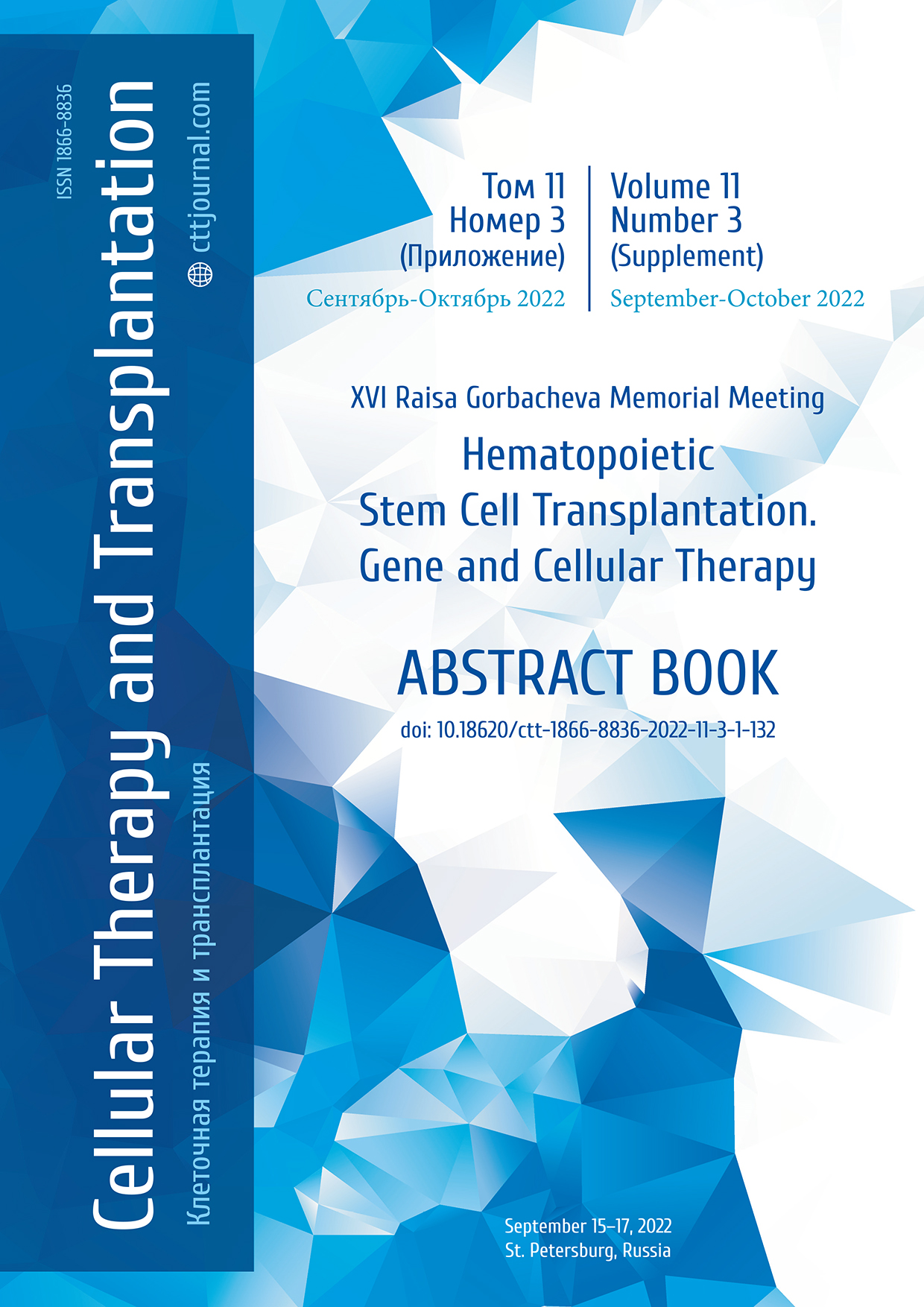AL-09. The experience with asciminib as a bridge- therapy before allogeneic bone marrow transplantation
Yulia Yu. Vlasova, Elena V. Morozova, Ksenia S. Yurovskaya, Tatiana A. Rudakova, Tatiana L. Gindina, Ildar M. Barkhatov, Ivan S. Moiseev, Alexander D. Kulagin
RM Gorbacheva Research Institute, Pavlov University, St. Petersburg, Russia
Contact: Dr. Yulia Yu. Vlasova, phone: +7 (965) 041-55-05, e-mail: jj_vlasova@mail.ru
Summary
Asciminib is a STAMP (Specifically Targeting the ABL Myristoyl Pocket) inhibitor that has shown potential efficacy and a good safety profile according to the results of a phase I and III studies in patients with Ph-positive leukemia failing prior TKIs. In Russia, asciminib is available under the Managed Access Program (MAP) approved by Novartis. While pre-transplant use of 2nd generation TKIs (nilotinib/ dasatinib) does not change the adverse events rate in allogeneic hemopoietic stem cell transplantation (allo-HSCT) recipients (Niederwieser C., 2021, Masouridi-Levrat S., 2021), there is yet no data available for patients receiving asciminib. This study was aimed to evaluate the safety and effectiveness of pre- and post-transplant aciminib in allo-HSCT candidates.
Patients and methods
From April 2021 to April 2022, 11 patients (pts) with CML were enrolled in the MAP program. Six pts who received asciminib underwent allo-HSCT. Before allo-HSCT, 4 pts achieved a complete hematological response, 1 and 1 MMR and CMR, respectively. All pts received allo-HSCT with reduced dose intensity conditioning regimen including fludarabine 30 mg/m2, busulfan 8-12 mg/kg. GVHD prophylaxis was PtCyTxMMF regimen, or monoCy (in case of bone marrow grafting from matched related donor). In 3 cases, (50%), bone marrow (n=1), or PBSC (n=2) from MRD were used. In 3 cases (50%) we used PBSC from unmatched (9/10, 8/10) unrelated donor.
Results
The median patients’ age was 36 (28-52) years, 84% were males. The median time from CML diagnosis to asciminib therapy initiation was 5 (1-15) years. One patient was in chronic phase (CP), 3 in accelerated phase (AP), and 2 had blast crisis (BC), respectively. Five (84%) pts had BCR/ABL1 mutations, 4 pts (66%) had BCR/ABL1t315i genotype. One patient (16%) had additional chromosomal abnormalities. Four (66%) pts received ≥3 TKIs, 1 (16%) had a history of ponatinib treatment. In 2 pts (34%), the initial dose of the drug was 40 mg BID, 4 (66%) pts started with 200 mg BID. Five (84%) patients did not develop adverse events (AEs) of any grade and 1 (16%) developed 3-4 AEs, however being able to continue the treatment. No differences in toxicity were found between the doses of 80 and 400 mg/day. No toxic events associated with conditioning regimen were registered. One patient developed VOD. The median time of engraftment was D+19 (18-21). In the post-transplant period, 2 pts continued to receive asciminib on D+30/D+60, with development of liver aGVHD after 30 days of treatment, which did not require correction of the underlying immunosuppressive therapy. One patient developed stage 3 intestinal aGVHD requiring glucocorticosteroids and ruxolitinib, resolving at 2 weeks.
Conclusion
Asciminib is potentially effective as bridge therapy prior to allo-HSCT. In patients with advanced-phase disease, asciminib is an optimal drug to improve the disease status before allo-HSCT. More extensive data obtained on larger cohort are needed, in order to assess its impact on long-term survival.
Keywords
Chronic myeloid leukemia, allo-HSCT, tyrosine kinase inhibitors, asciminib.


